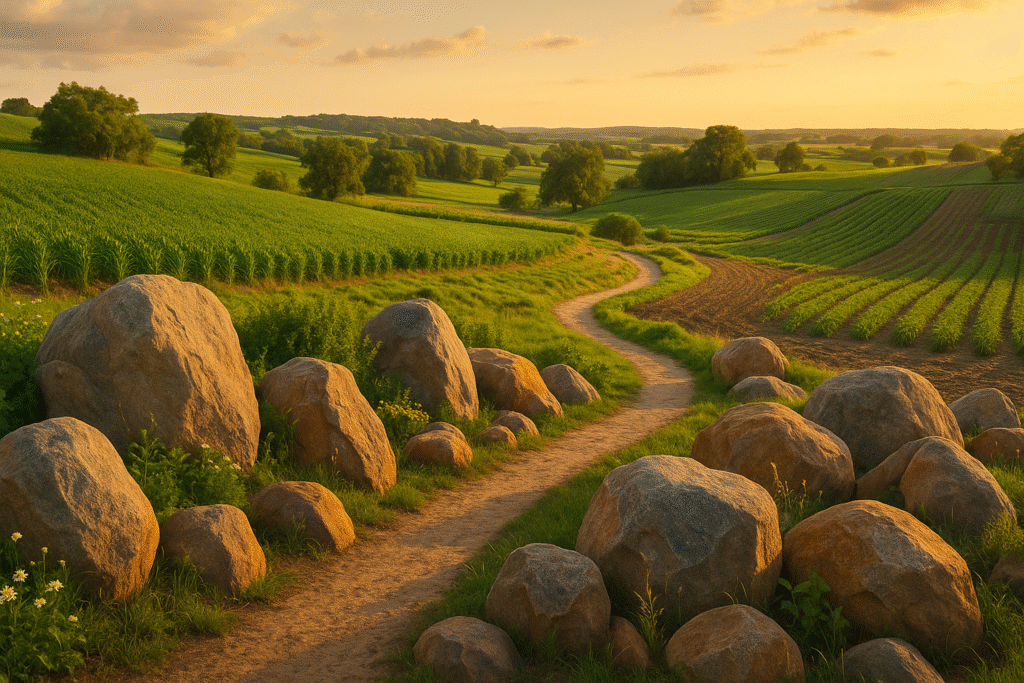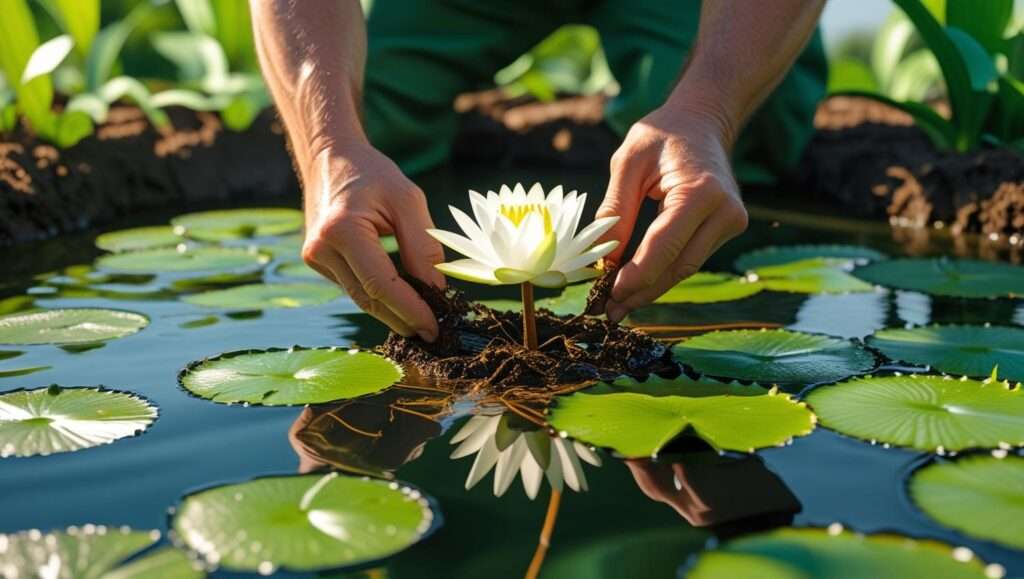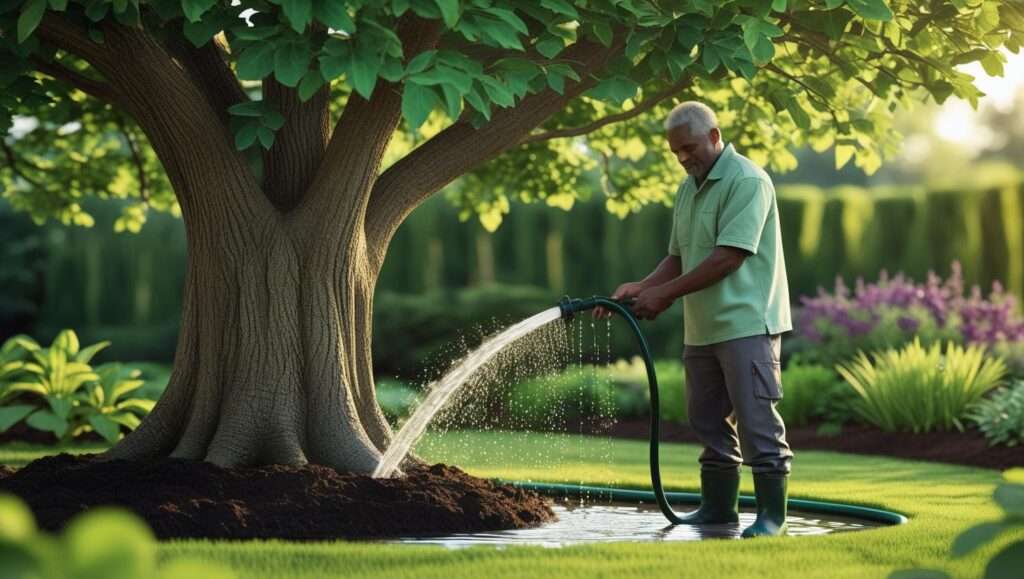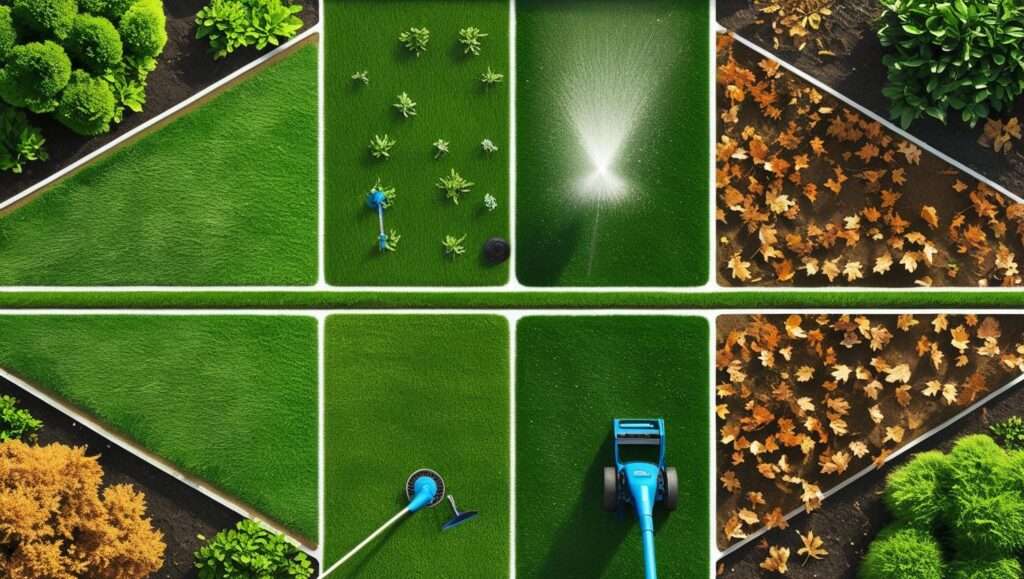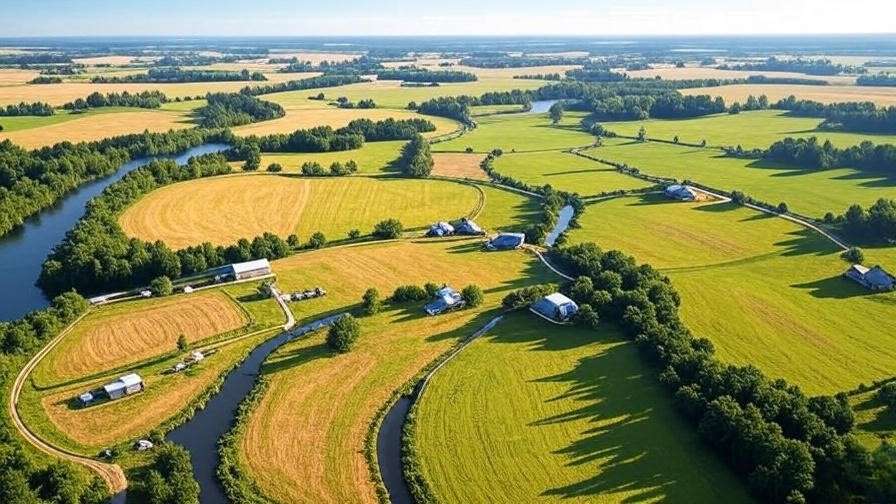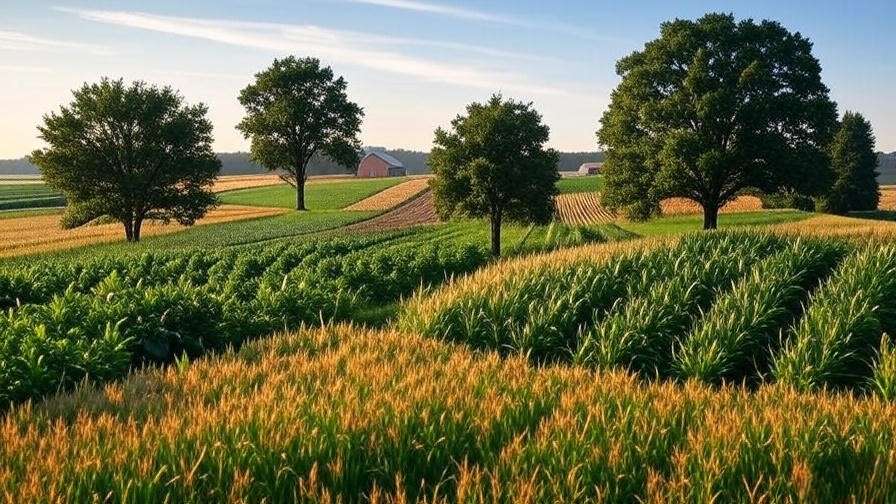Imagine transforming your farm into a breathtaking landscape that not only captivates visitors but also safeguards your soil from erosion. Landscaping boulders are the unsung heroes of modern agriculture, blending rugged beauty with practical functionality. Whether you’re a small-scale farmer, a homesteader, or managing a large agricultural operation, these natural stone features can elevate your farm’s aesthetic appeal while addressing critical soil conservation challenges. In this comprehensive guide, we’ll explore how landscaping boulders can enhance your farm’s visual charm and protect your land from erosion, drawing on decades of agricultural landscaping expertise and proven soil management strategies. From selecting the right boulders to designing stunning layouts and ensuring long-term soil health, this article offers actionable insights to help you create a sustainable, beautiful farm.
Why Landscaping Boulders Matter in Agriculture
Aesthetic Appeal for Farms
Landscaping boulders bring a timeless, natural elegance to agricultural settings. Unlike manicured lawns or artificial structures, boulders add a rugged, organic charm that complements the rural environment. They can serve as focal points, define pathways, or frame garden beds, creating a visually harmonious landscape. For example, a cluster of granite boulders placed at the entrance of a farm can make a striking first impression, inviting visitors and signaling a well-cared-for property. By strategically placing boulders, farmers can enhance the marketability of their land, especially for agritourism ventures or farm stands, where aesthetics play a significant role in attracting customers.
Functional Benefits for Soil Management
Beyond their visual appeal, landscaping boulders are powerful tools for soil conservation. Erosion, caused by water runoff, wind, or poor soil structure, threatens agricultural productivity by stripping away fertile topsoil. Boulders act as natural barriers, slowing water flow on slopes and anchoring soil in place. According to the USDA’s Natural Resources Conservation Service (NRCS), erosion can reduce crop yields by up to 50% in severe cases. By strategically placing boulders, farmers can mitigate these losses, ensuring long-term soil health and productivity. Boulders also reduce the need for chemical stabilizers, offering an eco-friendly solution for sustainable farming.
Economic and Environmental Value
Investing in landscaping boulders is both cost-effective and environmentally responsible. Unlike synthetic materials that degrade over time, boulders are durable and require minimal maintenance, making them a long-term investment. They also contribute to sustainability by reducing soil runoff into waterways, protecting local ecosystems. For instance, a well-placed boulder barrier can prevent sediment from clogging streams, preserving water quality for both farming and wildlife. Additionally, boulders sourced locally minimize transportation costs and carbon footprints, aligning with eco-conscious farming practices.
Choosing the Right Landscaping Boulders for Your Farm
Types of Boulders
Selecting the right boulder type is crucial for balancing aesthetics and functionality. Common options include:
- Granite: Durable and available in various colors (gray, pink, red), ideal for both decorative and erosion-control purposes.
- Limestone: Light-colored and versatile, perfect for creating soft, natural contrasts in farm landscapes.
- Sandstone: Warm-toned and textured, great for decorative borders but less durable in high-erosion areas.
| Boulder Type | Cost (per ton) | Durability | Aesthetic Appeal |
|---|---|---|---|
| Granite | $100–$200 | High | Bold, versatile |
| Limestone | $80–$150 | Moderate | Soft, natural |
| Sandstone | $70–$130 | Moderate | Warm, textured |
Choose a boulder type based on your farm’s climate, soil type, and aesthetic goals.

Size and Shape Considerations
Boulder size and shape depend on your farm’s scale and intended use. Large boulders (3–5 feet in diameter) are ideal for erosion control on steep slopes, as they provide substantial anchoring. Smaller boulders (1–2 feet) work well for decorative borders or garden accents. Consider irregular shapes for a natural look or rounded boulders for softer, flowing designs. When planning, ensure the boulder size complements your farm’s scale—oversized boulders can overwhelm small plots, while tiny rocks may look out of place on expansive fields.
Sourcing Boulders Sustainably
Sourcing boulders locally reduces costs and environmental impact. Contact nearby quarries or landscaping suppliers to find high-quality stones. Ethical sourcing is key—avoid suppliers that disrupt ecosystems or use unsustainable extraction methods. Dr. Jane Thompson, an agricultural extension officer, emphasizes, “Local sourcing not only cuts transportation emissions but also ensures boulders blend naturally with the regional landscape.” Check with your local agricultural extension service for recommendations on reputable suppliers committed to sustainable practices.
Designing with Landscaping Boulders
Planning Your Farm Layout
Effective boulder placement starts with a well-thought-out plan. Begin by sketching your farm’s layout, noting slopes, water flow patterns, and key aesthetic areas like entrances or garden beds. Consult a landscape architect or agricultural extension service for professional input, especially for large-scale projects. Consider factors like sunlight, soil type, and existing vegetation to ensure boulders enhance both form and function. For example, a small family farm in Vermont transformed its entrance by placing three large granite boulders along a curved pathway, creating a welcoming yet practical design.
Creating Functional and Aesthetic Features

Boulders can serve multiple purposes in farm design. Use them to:
- Terrace Slopes: Create stepped levels on hilly terrain to reduce runoff and improve accessibility.
- Frame Water Features: Surround ponds or irrigation channels with boulders to enhance beauty and stabilize banks.
- Outline Crop Fields: Use smaller boulders to mark boundaries, adding structure to sprawling fields.
Incorporate visuals like diagrams or photos to inspire readers. For instance, a diagram showing boulder placement on a sloped field can clarify how to maximize erosion control while maintaining aesthetic appeal.
Combining Boulders with Plants and Other Elements
Pairing boulders with native plants or cover crops enhances both beauty and soil health. For example, planting clover or alfalfa around boulders stabilizes soil while adding vibrant green contrast. Native grasses like switchgrass can soften boulder edges, creating a natural look. Consider integrating boulders with other landscaping elements, such as wooden fences or stone walls, to create cohesive designs. A farm in Oregon successfully combined sandstone boulders with native wildflowers, boosting pollinator activity and visual appeal.
Using Landscaping Boulders for Soil Erosion Control
Understanding Soil Erosion on Farms
Soil erosion is a major challenge for farmers, costing U.S. agriculture billions annually, according to the NRCS. Water runoff, wind, and poor soil management strip away topsoil, reducing fertility and crop yields. Sloped fields, overgrazed pastures, and heavy rainfall exacerbate the problem. By addressing erosion proactively, farmers can protect their land’s productivity and sustainability.
How Boulders Prevent Erosion

Boulders are highly effective at controlling erosion. They slow water runoff on slopes, reducing soil displacement, and act as windbreaks to minimize topsoil loss. For example, placing boulders in a staggered pattern along a hillside creates natural barriers that divert water flow, allowing soil to settle. Dr. Michael Rivera, a soil scientist, explains, “Boulders disrupt the energy of water and wind, preventing them from carrying away valuable topsoil.” To implement this:
- Identify high-risk erosion areas, such as slopes or streambanks.
- Select appropriately sized boulders based on the slope’s steepness.
- Place boulders in a staggered or terraced pattern to maximize coverage.
- Monitor and adjust placement after heavy rains to ensure effectiveness.
Best Practices for Installation
Installing boulders requires careful planning and, in many cases, professional assistance. Use heavy machinery like backhoes or skid steers to safely move large boulders. Ensure boulders are anchored securely, especially on steep slopes, to prevent shifting. For smaller projects, hand placement may suffice, but always prioritize safety. Consult local regulations, as some areas require permits for large-scale landscaping. Dr. Rivera advises, “Proper anchoring is critical—unstable boulders can cause more harm than good by redirecting water unpredictably.”
Maintenance and Long-Term Care
Inspecting and Maintaining Boulders
To ensure landscaping boulders remain effective and visually appealing, regular inspections are essential. Check for signs of shifting, especially after heavy rains or strong winds, as unstable boulders can disrupt soil stability or create safety hazards. Remove weeds or invasive plants growing around boulders to maintain a clean appearance and prevent root systems from dislodging stones. A quarterly inspection schedule is recommended, with more frequent checks during rainy seasons. For example, a farmer in Iowa reported that routine checks prevented a boulder from rolling into a crop field after a storm, saving both time and resources.
Enhancing Longevity
Boulders are naturally durable, but specific measures can extend their lifespan. For porous stones like limestone, consider applying a sealant to protect against weathering, especially in regions with freeze-thaw cycles. Integrate boulders with complementary erosion-control methods, such as mulching or geotextiles, to enhance their effectiveness. For instance, spreading organic mulch around boulders can further stabilize soil while improving the aesthetic. Regular cleaning with a pressure washer can remove dirt or algae, keeping boulders looking pristine. These steps ensure your investment in landscaping boulders pays off for decades.
Addressing Common Challenges
While boulders are low-maintenance, challenges can arise. Weed growth around boulder bases is a common issue, which can be managed with organic herbicides or manual removal. Another challenge is unintended water pooling, which occurs when boulders redirect runoff into low-lying areas. To address this, ensure proper spacing during installation to allow water to flow naturally. If pooling persists, consider adding drainage channels or gravel beds. A case study from a Nebraska farm showed that adjusting boulder placement resolved water pooling, improving crop health in adjacent fields.
Real-World Examples and Success Stories
Case Study 1: Small Family Farm
A small family farm in Virginia transformed its 10-acre property by incorporating landscaping boulders. Facing soil erosion on a sloped pasture, the farmers placed medium-sized granite boulders in a staggered pattern along the hillside. This not only reduced runoff but also created a stunning visual feature that attracted visitors to their farm stand. Before-and-after photos showed a dramatic improvement in both soil retention and aesthetic appeal. The farmer noted, “The boulders made our farm look professional and helped us retain topsoil for better grazing.”
Case Study 2: Large-Scale Agricultural Operation
A 500-acre soybean farm in Illinois used landscaping boulders to address erosion across multiple fields. By installing large limestone boulders along streambanks and sloped areas, the farm reduced soil loss by an estimated 30%, according to soil tests conducted by the local agricultural extension service. The boulders also enhanced the farm’s appearance, making it a model for sustainable practices in the region. The farm manager reported increased crop yields and reduced maintenance costs, proving the long-term value of boulder-based erosion control.
Lessons Learned from Experts
Landscape designers and agricultural engineers emphasize strategic planning and adaptability. Jane Thompson, an agricultural extension officer, advises, “Start small with boulder placement and monitor results over a season before scaling up.” Experts also stress the importance of integrating boulders with other conservation practices, such as cover cropping or contour plowing, for maximum impact. These insights underscore the need for a tailored approach, ensuring boulders meet both aesthetic and functional goals.
Cost Considerations and Budgeting
Estimating Costs
The cost of landscaping boulders varies based on type, size, and location. On average, expect to pay $70–$200 per ton, with transportation and installation adding $50–$100 per ton. For a medium-sized farm project (e.g., 10 boulders for a 5-acre plot), total costs typically range from $1,500 to $5,000. Below is a sample budget for a small-scale project:
| Item | Estimated Cost |
|---|---|
| 10 Granite Boulders | $1,500 |
| Transportation | $500 |
| Installation (Labor) | $1,000 |
| Total | $3,000 |
Consult local suppliers for accurate pricing and bulk discounts.
Cost-Saving Tips
To minimize expenses, consider these strategies:
- Source Locally: Purchasing boulders from nearby quarries reduces transportation costs and supports the local economy.
- Repurpose On-Site Rocks: If your farm has natural stone deposits, use them to lower material costs.
- DIY Installation for Small Projects: For smaller boulders, manual placement with basic equipment can save labor costs, but ensure safety protocols are followed.
Balancing DIY and professional installation depends on your project’s scale. For large or complex projects, hiring a contractor ensures proper placement and compliance with regulations.
Long-Term ROI
Investing in landscaping boulders yields significant returns. By preventing soil erosion, boulders protect crop yields, reducing the need for costly soil restoration or fertilizers. Aesthetically, they enhance farm appeal, potentially increasing revenue from agritourism or direct sales. A study by the NRCS found that farms implementing erosion-control measures like boulders saw a 10–20% increase in land value over five years. These benefits make boulders a smart financial choice for sustainable farming.
Environmental and Community Impact
Supporting Local Ecosystems
Landscaping boulders can create microhabitats that benefit local wildlife. For example, small crevices between boulders provide shelter for beneficial insects like pollinators or predatory beetles that control pests. Pairing boulders with native plants, such as milkweed or coneflowers, supports biodiversity and aligns with sustainable farming practices like permaculture. A farm in Wisconsin reported a 15% increase in pollinator activity after integrating boulders with native plantings, boosting crop pollination and yields.
Enhancing Community Appeal
A well-designed farm landscape attracts visitors, enhancing community engagement. Boulders can create inviting entrances, scenic pathways, or photo-worthy backdrops for agritourism activities like farm tours or weddings. A Michigan farm that added boulder-lined trails saw a 25% increase in its Community Supported Agriculture (CSA) program subscriptions, as visitors were drawn to the farm’s enhanced beauty. These features also foster pride in the local community, positioning your farm as a model of sustainability.
Regulatory Considerations
Before installing boulders, check local regulations, as some areas require permits for large-scale landscaping or erosion-control projects. Contact your county’s agricultural extension service or zoning board to ensure compliance. For example, projects near waterways may need approval to prevent environmental disruption. Staying informed about regulations demonstrates responsibility and enhances your farm’s reputation as a trustworthy operation.
FAQs About Landscaping Boulders
Q1: How do I know if landscaping boulders are right for my farm?
A: Boulders are ideal for farms with sloped terrain, erosion issues, or a desire to enhance aesthetics. Assess your land’s topography and consult an agricultural extension service to determine suitability.
Q2: Can I install boulders myself, or should I hire a professional?
A: Small boulders can be installed manually with proper equipment, but large or complex projects require professional expertise to ensure safety and effectiveness.
Q3: How do boulders compare to other erosion-control methods like terracing or cover crops?
A: Boulders are more durable and low-maintenance than cover crops and can complement terracing for enhanced erosion control. They’re particularly effective on steep slopes.
Q4: What maintenance is required for landscaping boulders?
A: Regular inspections, weed removal, and occasional cleaning or repositioning are typically sufficient to maintain boulders.
Q5: Are there any environmental risks associated with using boulders?
A: When sourced sustainably and installed correctly, boulders pose minimal risks. Improper placement can cause water pooling, so consult experts to avoid issues.
Conclusion
Landscaping boulders offer a powerful combination of aesthetic enhancement and practical soil conservation for farms of all sizes. By carefully selecting, placing, and maintaining boulders, you can create a visually stunning landscape while protecting your land from erosion. This article has provided expert-backed strategies, real-world examples, and actionable tips to help you integrate boulders into your farm effectively. Start by assessing your farm’s needs, consulting with local experts, and experimenting with small boulder projects. Share your experiences or questions in the comments below to join a community of farmers passionate about sustainable, beautiful agriculture. With landscaping boulders, your farm can thrive both visually and functionally for years to come.

